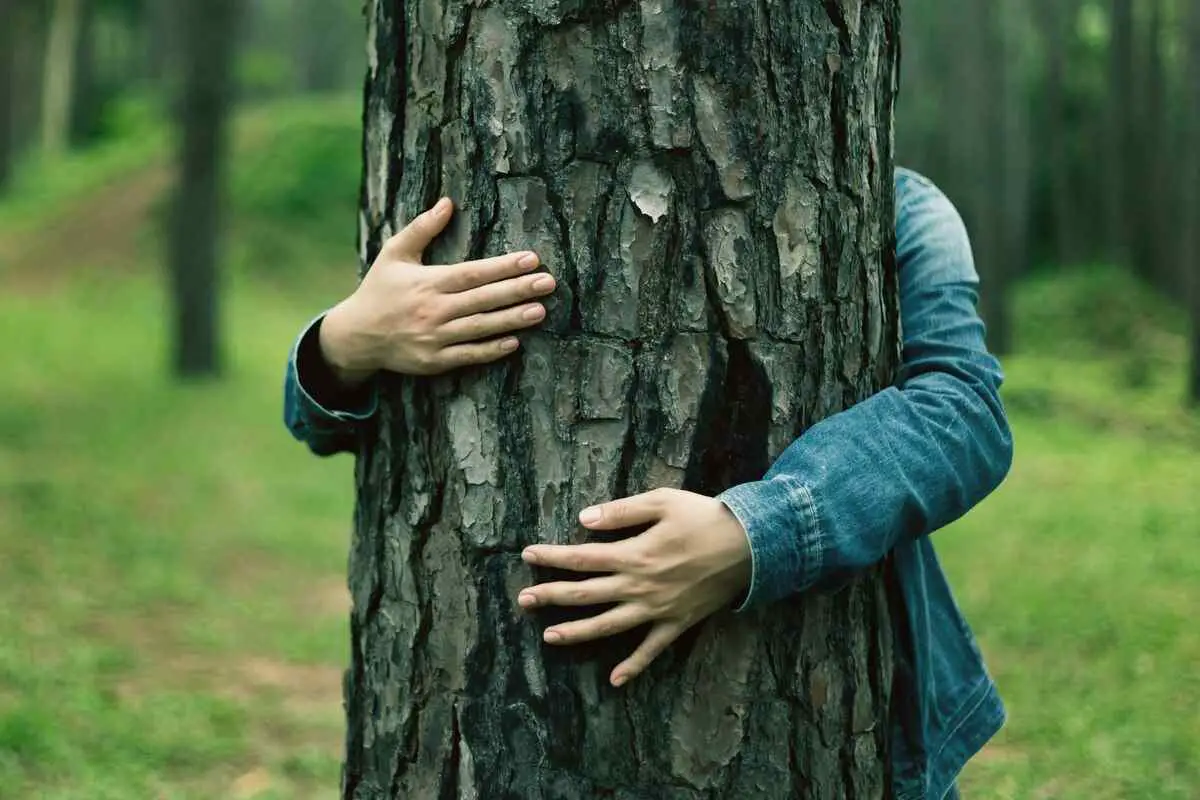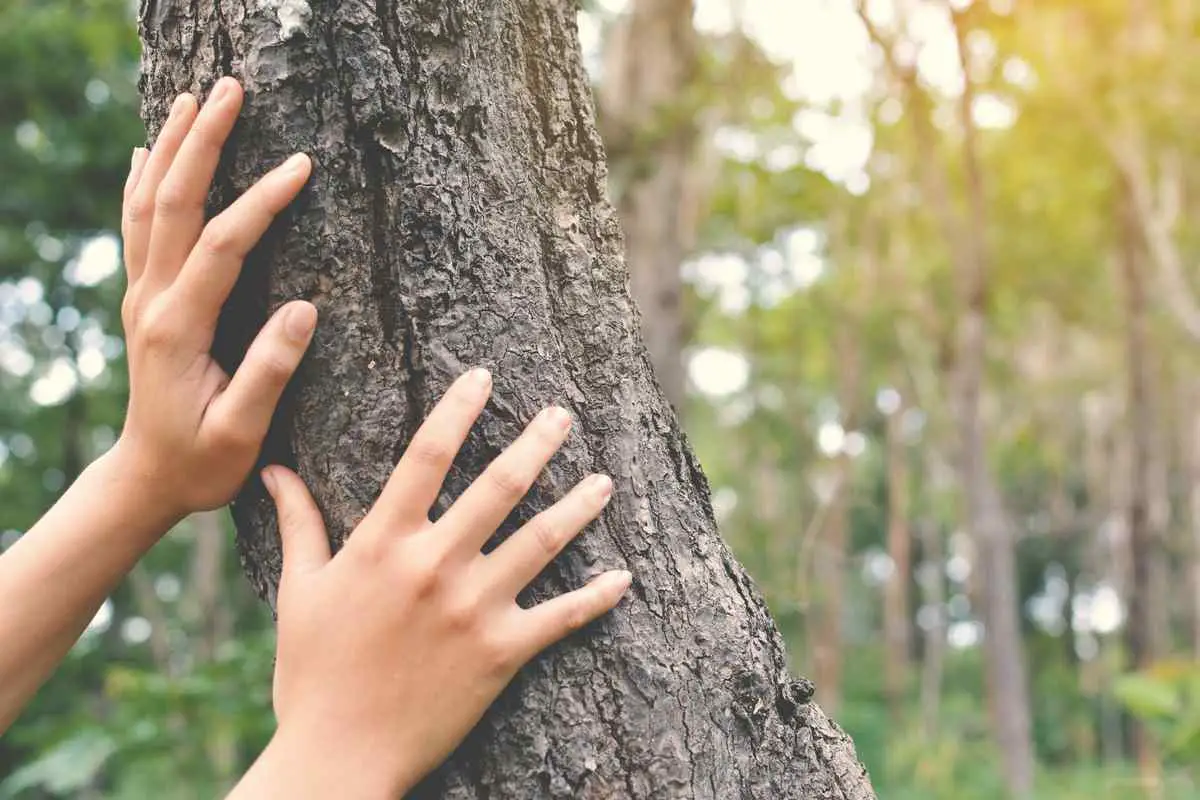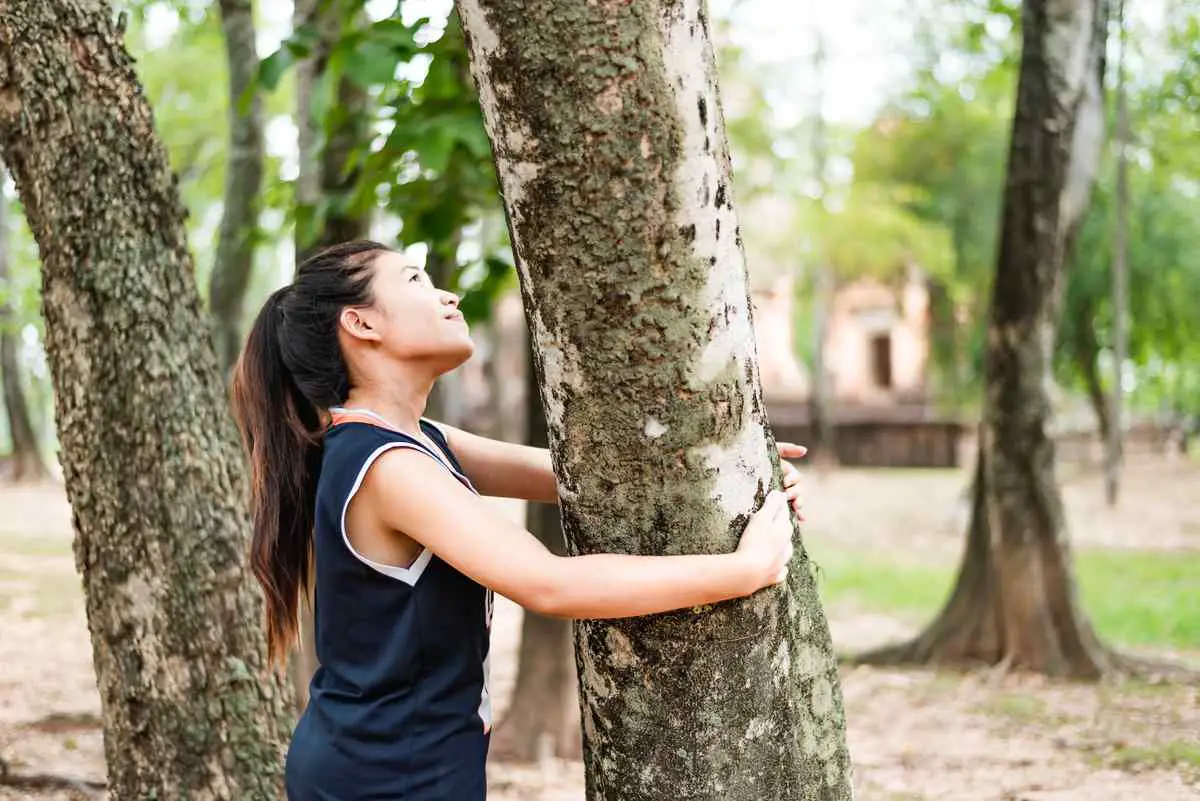Grounding isn’t a fancy ritual. It’s simple, kind, and you can feel it right away—especially when you focus on grounding yourself with trees. I’m sharing what actually works for me: barefoot earthing when possible, gentle tree-hugging (yes, really), mindful breathing, and tiny habits you can do in a city park or the tiniest backyard.
Table of Contents
Grounding Yourself With Trees: why this practice feels different

Trees are steady, rooted beings. When you combine earthing (skin on soil, grass, or sand) with hands on bark or your back resting against a trunk, the nervous system gets a clear message: safe, slow, present. For me, grounding yourself with trees feels like flipping off the internal alarm switch and turning on a quiet hum of okay-ness.
The “root effect” in plain words
Roots reach deep. When I touch a trunk and soften my breath, I imagine sending static and worry downward while receiving steadiness upward. It doesn’t need to be dramatic. A minute or two is already a win for tree grounding.
Earthing + tree contact = a friendly stack
Bare feet settle you. Tree contact anchors you. Put them together and you get a quick, layered reset that’s easy to repeat, even on rushed days.
Benefits of grounding yourself with trees

The list is simple: clearer head, calmer mood, easier sleep, and more natural energy the next day. Plus a subtle feeling of connection, like your body remembers it belongs outdoors sometimes.
Body shifts you can notice
- Slower breathing, softer shoulders
- Less jitter, more patience
- Sleep that comes quicker after an evening session
These signs tell you tree grounding is working, even if you don’t have perfect “meditation posture”.
Mood and focus perks
A quiet tree break during lunch can reset the afternoon. Five to ten minutes of grounding with trees beats scrolling—your brain actually rests, and your attention returns to a steady lane.
How to practice grounding yourself with trees (15–30 minutes)
This is the simple routine I use when I want to feel better fast. It keeps grounding yourself with trees doable and kind.
Step 1: choose a tree you like
Any healthy tree in a safe spot works: a park oak, a pine by a sidewalk, a quiet backyard friend. If the place feels welcoming, you’re in the right spot.
Step 2: arrive slowly
Stand near the trunk and notice color, texture, and scent. If barefoot is safe, slip off shoes. If not, no problem—tree grounding still works with shoes on.
Step 3: gentle contact

Place both palms on the bark, or lean your upper back on the trunk. A light tree hug is okay too. Keep it natural, no forcing.
Step 4: breathe in a simple rhythm
Inhale through your nose for 4, exhale through your mouth for 6. Do 10 rounds. If thoughts wander, come back to texture under your hands and the ground under your feet.
Step 5: visualize a two-way flow
On the exhale, send tension down through your feet. On the inhale, imagine steadiness traveling from roots to trunk to hands to chest.
Step 6: close with gratitude
Whisper thanks (quietly is fine), then step away slowly. Pick up a stray bit of litter if you see it—tiny acts deepen the bond.
Micro-rituals for busy days
Not every day allows 20 minutes. That’s fine. Sprinkle in short practices to keep grounding yourself with trees alive when time runs thin.
60-second palm press
One palm on bark, the other on your heart. Five slow breaths. Done. Tree grounding in a flash.
Rooted sway
Feet planted, knees soft. Sway like branches. Feel the connection from soles to earth.
Back-to-trunk reset
Lean your shoulders against the trunk, close your eyes for 90 seconds, and count your breaths.
Gratitude bow
Stand near the roots and do a small bow. It’s simple but the body understands the message.
Choosing the right tree and place
Comfort matters. If you feel safe and the area is clean enough for a short stay, it’s a green light.
What makes a good spot
- Low foot traffic
- Even ground (fewer pokey surprises)
- Some shade for summer and decent wind cover in colder months
These small details make grounding with trees consistent, not rare.
Safety and comfort tips
Check the ground for sharp bits. If pollen or sap bothers you, touch the trunk with a cloth layer or the back of your hand. In winter, keep sessions short, wear thin natural-fiber socks, and warm up after.
A 7-day plan to make grounding yourself with trees a habit

Rituals stick when you repeat them. Here’s a simple plan I use when I’m rebuilding my rhythm.
Day-by-day mini-schedule
- Day 1: 5-minute palm press + slow breathing
- Day 2: 10-minute mindful walk to your tree, a brief hug or lean
- Day 3: 12–15 minutes of earthing with trees (barefoot if safe)
- Day 4: Rest or a quick houseplant practice (hands on the pot, breath work)
- Day 5: 20-minute session under the canopy; end with gratitude
- Day 6: 5-minute rooted sway + 1 minute of silence
- Day 7: Your full 20–30 minute flow and a short note in a journal
Repeat weekly and adjust to seasons. Keep grounding yourself with trees light and friendly—no pressure to be perfect.
Variations that keep it fun
Tiny changes help you stay curious and engaged without forcing anything.
Tree-hugging for warmth

On cooler days, a gentle hug adds comfort. Forehead lightly touches bark, jaw unclenches, breath lengthens. It’s a cozy twist on tree grounding.
Forest-edge walk
If you have time, do a slow walk on soil and pause at two or three trees. This blends forest grounding with mini resets along the way.
Sensory scan ritual
Name five things you notice: shade, bark pattern, a small crackle of leaves, damp moss scent, a bird call. Nature attention cuts mental noise.
Grounding journal
Write one line after each session: time, place, mood before/after. That tiny note proves grounding yourself with trees is helping more than your memory admits.
When barefoot isn’t possible
No drama. Grounding with trees still works.
Try these swaps
- Gloves or cloth between your hand and bark
- Shoes on, back against the trunk
- Seated under the canopy with hands on the soil beside you
- A steady breath practice while watching the branches sway
Family-friendly ideas
Kids love tree grounding when it feels like play.
Make it a game
- Branches: stretch arms high and sway
- Roots: stomp gently and stand tall for a count of ten
- Forest whisper: everyone says one thing they’re grateful for
After-school micro-ritual
Two minutes by a familiar tree on the walk home beats a car meltdown later. It resets the whole crew.
Signs your practice is working
You feel your feet more often. Sleep comes easier. Your first reaction to stress isn’t always rush or panic. And you miss your tree a little when days get too busy—that’s a good sign.
What progress looks like week by week
Week one, you notice small calm pockets. Week two, the pockets connect. Week three, grounding yourself with trees starts to feel like brushing your teeth—basic care, not a special event.
Gentle mindset reminders
This is not performance. No gold stars for perfect stillness. The point is a felt sense of okay. Sometimes the best session is three breaths, one palm on bark, and a tiny smile because you showed up.
Make it yours
Prefer to sit? Sit. Prefer hands instead of a full hug? Great. Prefer morning shade to afternoon sun? Same. A flexible tree grounding routine lasts longer.
Troubleshooting common roadblocks
Stuff gets in the way. Here’s how I nudge past it.
“I feel silly.”
Start subtle: one hand on the trunk, eyes open. Give yourself two minutes. The awkward part fades; the calm part stays.
“Nowhere quiet near me.”
Use the calmest tree you can find. Early morning or just before dinner helps. Ten breaths still count for grounding with trees.
“Cold weather ruins it.”
Shorten sessions. Add a beanie and light gloves. Keep your back on the trunk for warmth and exit while you still feel good.
“Allergies.”
Pick low-pollen times, touch with fabric, and keep sessions brief. Rinse hands after.
Care and respect for trees
Treat the place as a friend’s living room. No carving, no snapping branches. Stay on paths where required. If it’s private property, ask. I like to leave the spot a touch cleaner than I found it—small thank-yous matter.
A full 25-minute flow (printable in your head)
Sometimes I just want a “press play” routine for grounding yourself with trees:
Minute-by-minute
- 00:00–03:00 Arrive: walk slow, notice color and shade
- 03:00–06:00 Contact: palms on bark, soften jaw
- 06:00–12:00 Breath: inhale 4, exhale 6, count ten rounds
- 12:00–17:00 Stillness: eyes open, notice sounds, let thoughts pass
- 17:00–22:00 Optional movement: gentle sway, shoulder rolls, ankle circles
- 22:00–25:00 Close: gratitude, one small piece of litter picked up, shoes on if needed
Repeat anytime you need a reset. It’s plain, repeatable, and friendly to a busy life.
FAQs: grounding yourself with trees
1) What does “grounding yourself with trees” mean?
It’s a simple practice of earthing (skin on natural ground) plus direct contact with a tree—hands on bark, leaning your back, or a gentle hug—to calm the nervous system.
2) How long should I spend per session?
Aim for 10–20 minutes when you can. Even 2–5 minutes helps, and 25–30 minutes can feel deeply settling on tougher days.
3) Do I have to be barefoot for it to work?
No. Bare feet are helpful, not mandatory. Touching the trunk or sitting under the canopy still counts for tree grounding.
4) Which trees are best?
The one you like and feel safe near. Oaks, pines, maples—whatever grows where you are. Consistency beats perfection.
5) Is tree-hugging required?
Not at all. Start with one palm on bark. If a hug feels natural later, go ahead. If not, your practice is still solid.
6) Can kids try grounding yourself with trees?
Yes, and they usually enjoy it. Make it playful: branches sway, roots grow, forest whisper. Keep an eye on safety.
7) What if I’m in a city with limited green space?
Pick a street tree at a quiet time or a small neighborhood park. Ten steady breaths are better than none.
8) How do I keep the habit?
Anchor it to something you already do: morning coffee walk, school drop-off, or a lunch break. Habit stacks make grounding yourself with trees automatic.
9) Will I feel results right away?
Often yes—less tightness in the chest, slower breath, a tiny mood lift. Bigger shifts show up over a week or two of regular sessions.
10) What should I avoid while practicing?
Avoid unsafe ground, damaged trees, and spots that feel sketchy. Skip long sessions in extreme weather; short and kind beats long and miserable.
11) Can I practice in winter?
Absolutely. Keep it shorter, wear layers, and use back-to-trunk contact. End before you start to shiver.
12) How do I know it’s working long-term?
You’ll notice steadier mornings, easier focus, and a quiet pull to visit your tree. That’s grounding yourself with trees doing its gentle job.
If you try one thing this week, let it be this: step outside, meet a tree, take five honest breaths. Keep grounding yourself with trees simple, warm, and yours.






